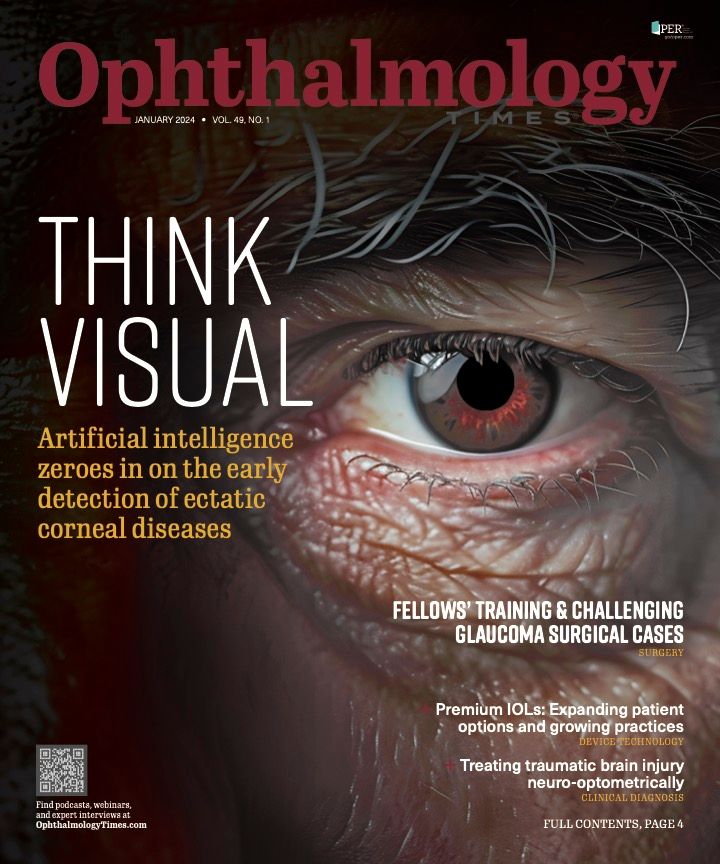Publication
Article
Digital Edition
Premium IOLs: Expanding patient options and growing practices
Author(s):
Patients are encouraged to choose the optimal technology for their particular situation.
(Image credit: AdobeStock/Oktay)

Premium IOLs have a lot to offer patients; however, added costs and time spent educating patients are considerations for clinicians. Sharon Richens, MD, FACS, shares the highlights from a recent Ophthalmology Times case-based roundtable on the advantages and considerations of providing a broader selection of premium IOLs to patients.
Selecting a premium IOL
The consensus, according to Richens, was that patients should not be prejudged regarding their interest in or willingness/ability to pay for premium lOL technology. Even patients in strict managed care programs or Medicaid have resources or friends or family who can help them achieve the best possible visual outcome. The standard approach by all physicians is to describe all IOL options, which allows patients to choose the optimal technology for their particular situation.
Regarding multifocal lenses, the roundtable participants asked patients about their visual needs and remained alert for personality factors and visual pathologies that preclude multifocal IOL implantation. The light adjustable lens (LAL; RxSight) is an exciting, but costly, option, and physicians expressed concern about creating coalitions among their neighboring physicians to access the technology.
“Individualizing the choice of premium IOLs really focused on determining patients’ visual needs, the ocular pathologies, and being able to explain why a particular IOL would or would not be appropriate,” Richens said. “The bottom line for physicians was what they would choose for a family member and why.”
Lifestyle was another consideration that focused on the lens that would provide the best advantage for patients. Regarding the needs of elderly patients, hands-free vision may be easier than handling or locating glasses. Physicians also saw the need to consider short- and long-term patient expectations. They discussed the optimization of patients’ vision with LASIK or photorefractive keratectomy (PRK) when the surgical goal was unmet and costly. Providing patients with reasonable expectations about vision improves the practice’s relationship long term with that patient.
LAL technology
This technology provides the opportunity to use premium lenses in patients who previously might not have been good candidates, and it eliminates dysphotopsias and night vision problems.
Richens described scenarios of patients with corneal pathologies for whom the LAL worked well. One patient had bilateral keratoconus and underwent full-thickness corneal transplants and penetrating keratoplasty and more recently cataracts. His work involved computers, electronics, and near work. Implantation of LALs resulted in 20/25 in one eye, 20/20 in the other, and a happy patient.
Another patient underwent myopic LASIK with flaps created with a keratome that can result in central islands and irregular astigmatism years later. Following LAL implantation, this patient had 20/15 in the dominant eye and 20/60 uncorrected distance vision with J2 near vision and was very happy.
Other patients underwent radial keratotomy or astigmatic keratotomy and had irregular astigmatism, significant depth of field because of myopia, and multifocal corneas. These patients can be very eager for an excellent refractive result but also are difficult to treat, and they did beautifully with LALs, Richens noted.
A pearl is that a better visual outcome can be reached by delaying the light adjustments for patients who have undergone a previous refractive surgery. Although the standard protocol involves the first light adjustment at about 4 weeks, substantially extending the time to the first light adjustment helps ensure corneal stability.
Finally, to ensure that patients really want a LAL, Richens said she advises allowing sufficient time to make a permanent decision and let the patient figure out what they want. She also recommends doing contact lens trials to provide a greater measure of comfort and certainty in their decisions.
Integrating multifocal LALs into practice
This conversation raised questions regarding the roles of different clinicians in the practice and then following through on IOL implantation with patients once the idea of a premium IOL has been introduced.
Richens noted that some practices use helpful video simulations from some IOL manufacturers and from patient education software systems. In addition, she believes a well-trained surgical counselor is invaluable, and some practices have fully employed optometrists in the practices.
A discussion was undertaken of how well integrated LALs are in optometric referral networks and if optometrists in the practice or referring optometrists should be involved in the light adjustment process with the new LALs.
The consensus reflected a desire to get referring doctors on board so that they understand the potential of the technology and that those who were already referring patients for multifocal lenses had a good understanding of the LAL advantages and disadvantages.
The roundtable participants expressed reluctance to trust optometrists who were not fully employed and embedded in the practice with the actual final refractions and light adjustments. In addition, clinic time was an issue with both lens types; ie, the multifocals require about 3 months for neuroadaptation and the LALs require more postoperative visits. Several physicians reported that the average number of treatments for LALs was 2, not 3, and then 2 lockdowns.
“There was a lot of enthusiasm for premium lenses, for the preoperative precision and surgical technique and postoperative management that goes into getting them right, and a high degree of satisfaction in achieving the best possible results for these patients, provided that they have a clear understanding of what to expect in the short and long term,” Richens concluded.
Sharon Richens, MD, FACS
P: 435-986-2020
Richens is in private practice at Richens Eye Center in St George, Utah.

Newsletter
Don’t miss out—get Ophthalmology Times updates on the latest clinical advancements and expert interviews, straight to your inbox.
2 Commerce Drive
Cranbury, NJ 08512
All rights reserved.




